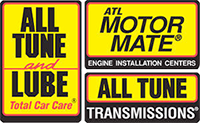543 Memorial Blvd. Murfreesboro, TN 37129 | Monday-Friday 7:30am-5:30pm | Closed Sat-Sun
Keep Your Car Powered Up: A Guide to Different Types of Automotive Batteries and Maintenance Tips
With various types of car batteries available in the market, understanding their differences and adopting proper maintenance practices will help you maintain a trouble-free driving experience. At ATL Total Car Care, our local mechanics are happy to answer any of your questions about choosing the ideal battery for your vehicle, and how to properly maintain it. Here’s a look at common types of car batteries, as well as some helpful maintenance tips.
Types of Car Batteries
- Lead-Acid Batteries:
Conventional: These are the standard, affordable batteries found in most vehicles. They contain lead plates submerged in sulfuric acid, producing the necessary electrical charge.
- AGM (Absorbent Glass Mat) Batteries:
Known for their high performance, AGM batteries use a glass mat separator to hold the electrolyte. They are spill-proof and provide excellent performance in demanding conditions, making them suitable for high-end vehicles.
- Lithium-Ion Batteries:
Commonly found in hybrid and electric vehicles, lithium-ion batteries are lightweight and have a high energy density. They provide quick charging and are durable, but they come with a higher price tag.
Maintenance Tips for Car Batteries
- Regular Inspections:
Perform visual inspections of the battery, checking for any signs of corrosion, leaks, or damage. Battery terminals can be cleaned using a mixture of baking soda and water, which helps with removing corrosion and promoting a strong electrical connection.
- Secure Battery:
Ensure that the battery is securely mounted in place to prevent vibrations that can damage the internal components.
- Jump-Starting Precautions:
It’s best to avoid letting the battery discharge completely. But if you do need to jump-start your car, be sure to follow proper safety procedures. While jump-starting, don’t let the cable ends or vehicles touch. With both vehicles off, place the red cable on the dead battery’s positive terminal, then connect it to the positive terminal of the booster vehicle. Then you can connect the black cable to the booster car’s negative terminal. After that, connect the black cable to a grounded and unpainted metal surface that is within a foot of the battery in the dead car. Attaching it to a nearby surface on the vehicle’s body rather than the dead battery’s negative terminal will reduce the chance of sparks. Start up the booster car and wait a few minutes before starting the dead car. After starting the dead car, continue to charge for 15 to 20 minutes to properly recharge. Remove cables in reverse order from how you attached them.
Be Mindful of Lifespan/Replacement Schedule
- Car batteries commonly last for between 3 and 5 years. You’ll want to be mindful of your particular battery's lifespan and install a new one at the appropriate time.
Disconnect Battery on Cars that Are Sitting for Extended Periods
- If the vehicle is going to sit unused for an extended period of time, then it’s worth disconnecting the negative battery cable. Be sure to do this with the engine off and make sure your wrench doesn’t touch both terminals at the same time.
Car Battery Replacement & Auto Electric Repair in Murfreesboro, TN
When you need
auto repair in Murfreesboro
and the surrounding area, contact ATL Total Car Care at
615-813-9970. Feel free to give us a call today to make an appointment!
Service Request
Please fill in the form below and we'll have a representative contact you.
We will get back to you as soon as possible.
Please try again later.
About Us
At our premiere auto shop, we are dedicated to delivering an exceptional experience for our customers, ensuring they leave our facility in a car or truck that is safe, reliable and comfortable to drive.
All Rights Reserved | ATL Total Car Care



